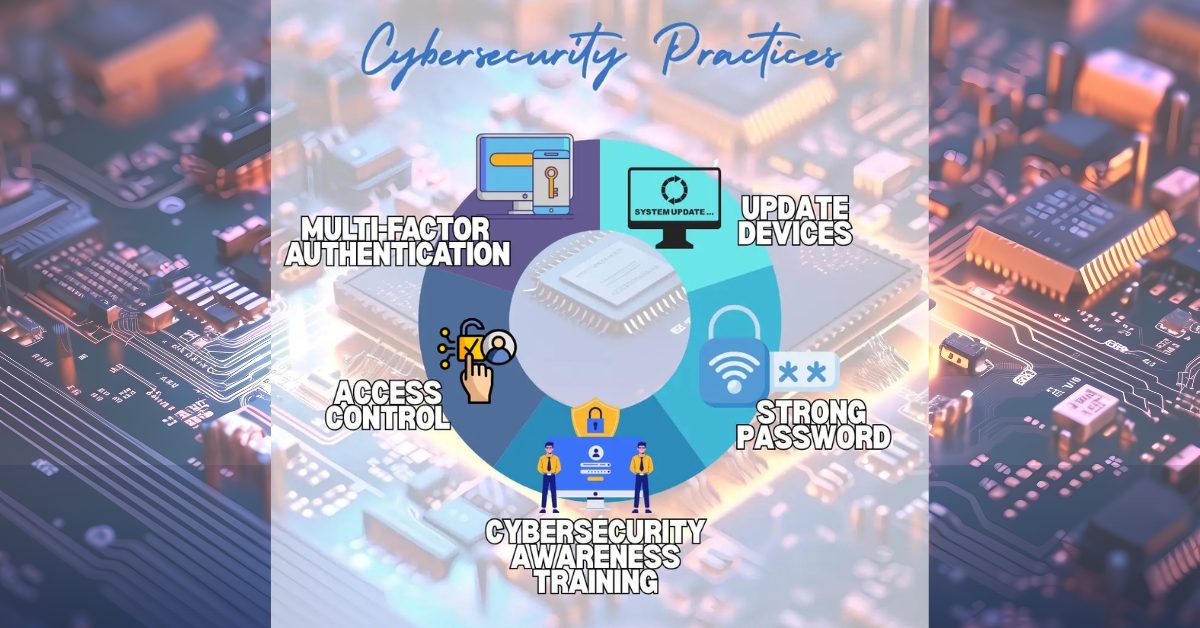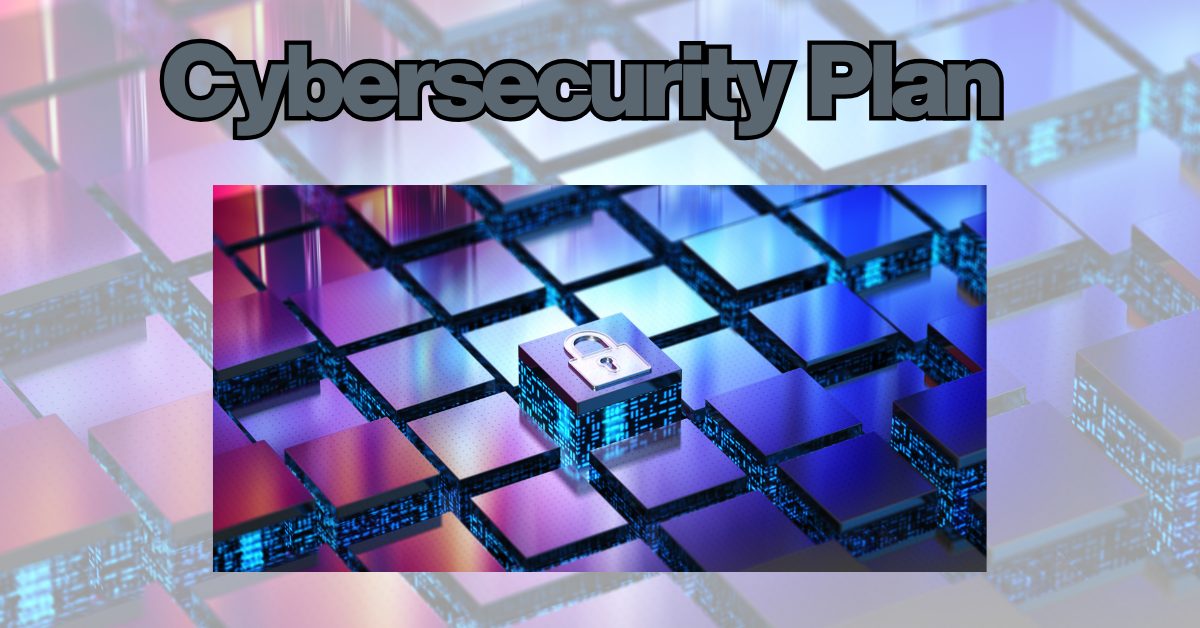Why Cybersecurity Practices Matter More in a Hybrid Work Setup
As small and mid-sized businesses (SMBs) adapt to hybrid work environments, the line between office and remote systems continues to blur. This new flexibility has introduced productivity gains but also expanded the threat surface that cybercriminals can exploit. That’s why implementing effective cybersecurity practices is no longer optional—it’s foundational to business continuity and data protection.
To stay resilient in this hybrid setup, SMBs must prioritize simple but effective solutions that don’t overwhelm staff or budgets. Below are five effortless cybersecurity practices that truly work, along with practical tips and tools any SMB can adopt today.
Implement an MFA System to Strengthen Access
Multi-factor authentication (MFA) is one of the most effective and affordable security measures an SMB can put in place. It requires users to verify their identity using two or more credentials: something they know (like a password), something they have (a phone or token), or something they are (biometric data).
Why it matters: Even if a password is compromised, the attacker won’t get far without the second factor. This simple step can stop the vast majority of credential-based attacks.
Best practices:
• Enforce MFA across all key platforms, especially email, cloud services, and client data systems.
• Use authenticator apps like Microsoft Authenticator or Google Authenticator instead of SMS, which is more vulnerable.
Not only is an MFA system a critical part of cybersecurity, but it’s also something cyber insurance providers now expect from businesses.
Real-life impact: In a 2023 report from Microsoft, enabling MFA blocked 99.9% of automated attacks. It’s a low-cost, high-impact step for every hybrid SMB.
Establish Strong Password Hygiene
Weak, reused, or stolen passwords are one of the top causes of data breaches. Training employees to create and manage passwords correctly should be a basic part of your cyber security best practices for business.
What to implement:
• Require passwords to be at least 12 characters long and a mix of letters, numbers, and symbols.
• Discourage reusing the same password across multiple platforms.
• Promote the use of secure password managers like LastPass, Bitwarden, or 1Password.
Strong password hygiene supports and enhances other cybersecurity practices, like access control and endpoint protection.
Additional tip: Implement automatic lockouts after multiple failed login attempts to prevent brute-force attacks. Educate your team about avoiding obvious passwords, like “CompanyName2024” or “Password123.”
Common mistake to avoid: Allowing users to store passwords in browsers. While convenient, it’s a risky habit that can expose credentials if the browser is compromised.
Provide Ongoing Cybersecurity Awareness Training
It takes more than just technology to protect your company. Human error is still a major cause of breaches, especially through phishing attacks. For this reason, frequent training for staff members is crucial.
Focus areas for training:
• How to identify phishing emails, suspicious links, and fake login pages
• Safe browsing habits and secure file sharing
• How to proceed if they believe there has been a security incident
Best approach: Keep it simple and consistent. Quarterly micro-trainings or monthly phishing simulations can be more effective than long annual sessions.
Why it matters for hybrid SMBs: Employees working from home may be more distracted, less supervised, and more likely to fall for phishing attempts. Security awareness fills that gap.
Bonus strategy: Create a security ambassador within each department—a go-to person trained in recognizing and reporting threats. This peer-led approach boosts accountability and engagement.
By building a cyber-aware culture, you add a human firewall to your cybersecurity practices.
Patch and Update Devices Promptly
Software and hardware vulnerabilities are commonly exploited by attackers. If your devices aren’t updated regularly, you’re essentially leaving the door wide open.
What to do:
• Enable automatic updates for all operating systems and software.
• Set up patch management systems if you have multiple devices or remote workers.
• Ensure third-party tools and browser extensions are monitored for vulnerabilities.
Failing to patch systems on time has led to high-profile breaches, even among large organizations. For SMBs with limited IT resources, regular patching is one of the simplest yet most overlooked best cybersecurity practices.
Real-world example: The 2017 Equifax breach, which affected 147 million consumers, stemmed from an unpatched Apache vulnerability. SMBs face similar risks if they delay even a single critical update.
Remote work risk factor: Hybrid employees may postpone updates or ignore prompts. Use remote monitoring tools to enforce updates and track compliance.
Use Access Control Security Services
Not every employee in your organization requires access to every system or file. Access control security services help restrict data based on job roles, locations, or devices.
How it helps:
• Minimizes the risk of accidental or malicious data exposure
• Makes it easier to trace the source of a breach or suspicious activity
• Limits the impact of compromised credentials
What to implement:
• Use identity and access management (IAM) tools to define roles and access levels
• Audit access permissions regularly, especially when roles change or employees leave
• Combine with MFA for layered security
In a hybrid environment: Employees access company data from home networks, personal devices, and unfamiliar locations. Without proper access controls, even a single breach can spread across systems.
Best tools: Microsoft Entra ID, Okta, and JumpCloud offer access control services tailored for small and medium-sized businesses.
Reminder: Access control isn’t just about restricting access—it’s about logging and visibility. Choose tools that give real-time reporting on who accessed what, when, and from where.
Bonus Tips: Security Layers That Add Real Protection
While the five practices above are your starting foundation, here are a few extra security layers to consider:
• Use a VPN: Protects remote workers from unsafe public Wi-Fi by encrypting data in transit.
• Endpoint Protection Software: Detects and blocks malware, ransomware, and zero-day threats.
• Cloud Backup Solutions: Ensures business continuity in case of ransomware attacks, accidental deletion, or hardware failure.
These additional defenses reinforce your primary cybersecurity practices and offer another safety net when something goes wrong.
Conclusion
You don’t need a huge IT budget or in-house cybersecurity team to protect your hybrid business. By focusing on the best cybersecurity practices—like implementing an MFA system, maintaining password hygiene, providing employee training, patching devices promptly, and using access control security services—you can significantly reduce your risk.
Cyber threats may be evolving, but these proactive steps build a strong defense. With consistency and the right tools, you can make cybersecurity a sustainable and effective part of your business strategy.. By taking these proactive steps, your business becomes much harder to hit.
At Gallop Technology Group, we help SMBs build smart, secure systems that support productivity, not block it. Let us help you implement practical, budget-friendly cybersecurity practices tailored to your hybrid setup.
Schedule your free security assessment at www.galloptechgroup.com/request-an-appointment and see where your security stands.
Source:







